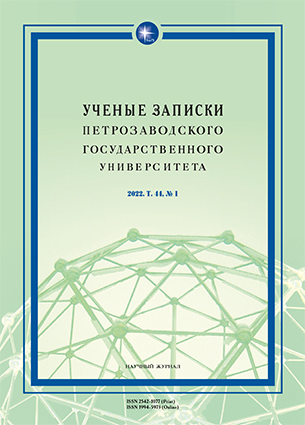СТРУКТУРА КОГНИТИВНОГО СОДЕРЖАНИЯ
И КОГНИТИВНОГО ЗНАНИЯ РУССКОЙ ЛЕКСИКИ
STRUCTURE OF COGNITIVE CONTENT AND COGNITIVE KNOWLEDGE
OF RUSSIAN VOCABULARY
Author(s): Elena Mihailovna MarkovaSubject(s): Language and Literature Studies
Published by: Петрозаводский государственный университет
Keywords: lexical semantics; semantic volume of a word; cognitive knowledge; Slavic languages
Summary/Abstract: The article deals with the level organization of the semantic volume of a word and the meaning of such anunderstanding of lexical semantics for the development of Russian vocabulary in a Slavic classroom. The relevance ofthe research is due to the linguo-cognitive focus of modern research not only in linguistics, but also in the methodologyof teaching languages. The goal is to describe the structure of the cognitive content of a word as opposed to its semanticstructure. The tasks include the allocation of levels of the cognitive content structure, describing their characteristics,identifying the specifi cs of each level in closely related Slavic languages (Russian, Czech, Slovak), and the correlationof such a vision of the semantic content organization with the stages of its acquisition in a foreign-language (Slavic)classroom. The author examines three levels of the cognitive content structure: denotative, structural and conceptual.They not only describe the semantic volume of the word, but also demonstrate the sequence and logic of the semanticdevelopment of the lexeme. Taking these levels into account helps to structure the content of a lexical unit according toits cognitive development and, therefore, the cognitive knowledge about it. Such an interconnected and interdependentvision of the cognitive content and cognitive knowledge of lexemes is the novelty of this research. This approach tothe content side of the lexeme has both theoretical and practical value, since it corresponds to the logic of its cognitivemastery by foreigners, contributes to the didactic organization of vocabulary when teaching Russian as a foreign language,and helps teachers to minimize and distribute lexical material in accordance with the stages of learning. This isof particular importance in a Slavic classroom due to the numerous lexical and semantic similarities and diff erences atall semantic levels, which the author demonstrates using the comparative material of the Russian, Czech and Slovaklanguages.
Journal: Ученые записки Петрозаводского государственного университета
- Issue Year: 44/2022
- Issue No: 1
- Page Range: 43-49
- Page Count: 7
- Language: Russian

